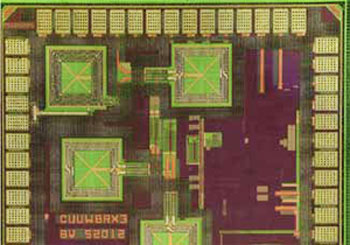 Researchers are attempting to build self-powered systems using nanoscale devices that can transmit and receive wireless signals using so little power that their batteries never need replacing.
Researchers are attempting to build self-powered systems using nanoscale devices that can transmit and receive wireless signals using so little power that their batteries never need replacing.
Feb 4th, 2013
Read more
 Scientists report how they have directly transferred the quantum information stored in an atom onto a particle of light. Such information could then be sent over optical fiber to a distant atom.
Scientists report how they have directly transferred the quantum information stored in an atom onto a particle of light. Such information could then be sent over optical fiber to a distant atom.
Feb 4th, 2013
Read more
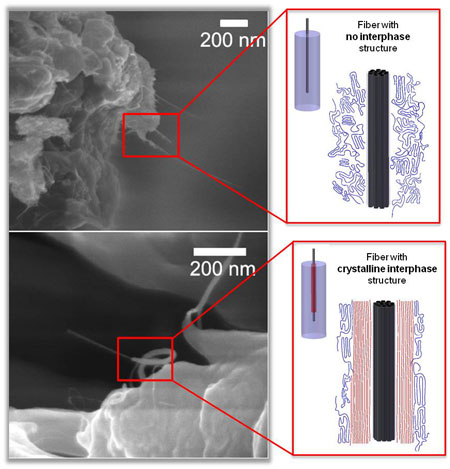 Most flexible polymers are inherently flimsy. When you look at their micro-structures it's easy to see why: They look like piles of entangled spaghetti strands. This leads to weak performance, says Northeastern University mechanical engineering professor Marilyn Minus, who is taking advantage of another scientific revolution to change this behavior: carbon nanotechnology.
Most flexible polymers are inherently flimsy. When you look at their micro-structures it's easy to see why: They look like piles of entangled spaghetti strands. This leads to weak performance, says Northeastern University mechanical engineering professor Marilyn Minus, who is taking advantage of another scientific revolution to change this behavior: carbon nanotechnology.
Feb 2nd, 2013
Read more
Researchers from the University of Bordeaux in France deployed high-frequency sound waves to test the stiffness and viscosity of the nuclei of individual human cells. The scientists predict that the probe could eventually help answer questions such as how cells adhere to medical implants and why healthy cells turn cancerous.
Feb 2nd, 2013
Read more
 The NanoThinking team has put together an interactive map of nanotechnology competencies in France.
The NanoThinking team has put together an interactive map of nanotechnology competencies in France.
Feb 1st, 2013
Read more
 Salk researchers share a how-to secret for biologists: code for Amazon Cloud that significantly reduces the time necessary to process data-intensive microscopic images. The method promises to speed research into the underlying causes of disease by making single-molecule microscopy of practical use for more laboratories.
Salk researchers share a how-to secret for biologists: code for Amazon Cloud that significantly reduces the time necessary to process data-intensive microscopic images. The method promises to speed research into the underlying causes of disease by making single-molecule microscopy of practical use for more laboratories.
Feb 1st, 2013
Read more
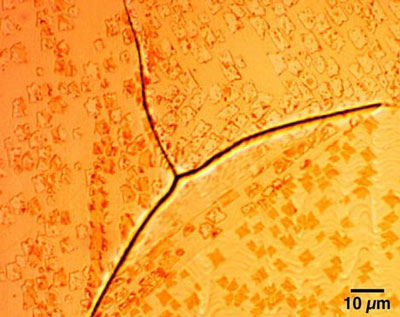 A new way of growing graphene without the defects that weaken it and prevent electrons from flowing freely within it could open the way to large-scale manufacturing of graphene-based devices with applications in fields such as electronics, energy, and healthcare.
A new way of growing graphene without the defects that weaken it and prevent electrons from flowing freely within it could open the way to large-scale manufacturing of graphene-based devices with applications in fields such as electronics, energy, and healthcare.
Feb 1st, 2013
Read more
This new preliminary work shows the dots can be used to rapidly move high concentrations of calcitriol to targeted tumor sites where cancer cells accumulate, and also through the lymph system where the cancer spreads. With this approach, the calcitriol can fight on multiple fronts and the targeted location can be visualized with an imaging system tracking the quantum dots.
Feb 1st, 2013
Read more
Differences in tissue stiffness have potential to aid in diagnosis, therapy.
Feb 1st, 2013
Read more
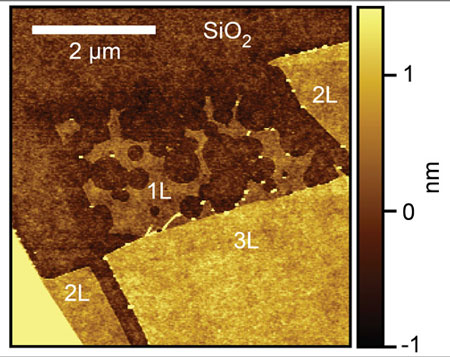 Thinnest graphene sheets react strongly with hydrogen atoms; thicker sheets are relatively unaffected.
Thinnest graphene sheets react strongly with hydrogen atoms; thicker sheets are relatively unaffected.
Feb 1st, 2013
Read more
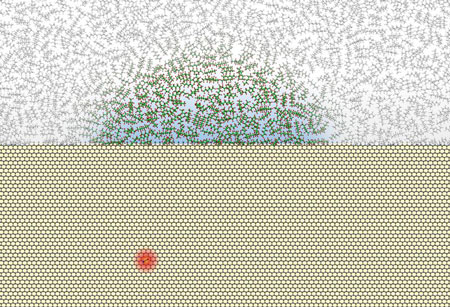 Stuttgarter Physiker weisen Kernspinsignale in wenige Nanometer kleinem �ltropfen nach.
Stuttgarter Physiker weisen Kernspinsignale in wenige Nanometer kleinem �ltropfen nach.
Feb 1st, 2013
Read more
An international team of researchers has found a way to store vast amounts of data - up to one petabyte - per square inch. Using information stored in the spin of an electron, the scientists succeeded in storing the information in an organic molecule and reading it at a temperature close to room temperature.
Feb 1st, 2013
Read more
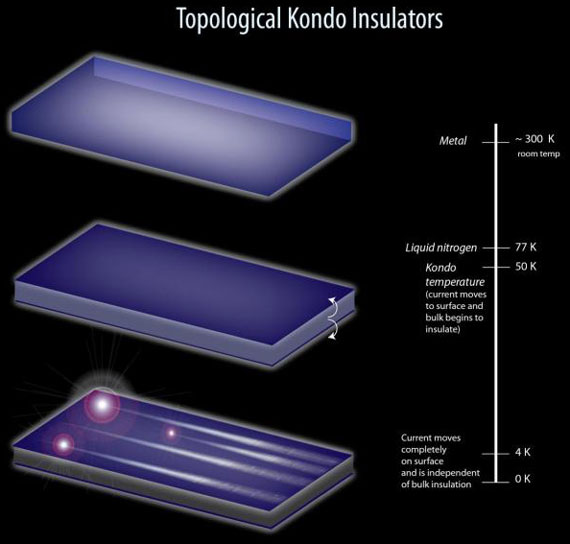 An old material gets a new name, and with it, topological insulators have another chance to shine. Samarium hexaboride (SmB6) has been around since the late 1960s - but understanding its low temperature behavior has remained a mystery until recently. Experimentalists have recently confirmed that this material is the first true 3D topological insulator.
An old material gets a new name, and with it, topological insulators have another chance to shine. Samarium hexaboride (SmB6) has been around since the late 1960s - but understanding its low temperature behavior has remained a mystery until recently. Experimentalists have recently confirmed that this material is the first true 3D topological insulator.
Jan 31st, 2013
Read more
New York University physicists have developed a method for moving microscopic particles with the flick of a light switch. Their work relies on a blue light to prompt colloids to move and then assemble - much like birds flock and move together in flight.
Jan 31st, 2013
Read more
A new study details the creation of innovative cardiac patches that utilize nanotechnology to enhance the conductivity of materials to induce cardiac tissue formation.
Jan 31st, 2013
Read more
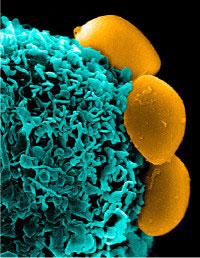 By cloaking nanoparticles in the membranes of white blood cells, scientists at The Methodist Hospital Research Institute may have found a way to prevent the body from recognizing and destroying them before they deliver their drug payloads.
By cloaking nanoparticles in the membranes of white blood cells, scientists at The Methodist Hospital Research Institute may have found a way to prevent the body from recognizing and destroying them before they deliver their drug payloads.
Jan 31st, 2013
Read more
 Researchers are attempting to build self-powered systems using nanoscale devices that can transmit and receive wireless signals using so little power that their batteries never need replacing.
Researchers are attempting to build self-powered systems using nanoscale devices that can transmit and receive wireless signals using so little power that their batteries never need replacing.









 Subscribe to our Nanotechnology News feed
Subscribe to our Nanotechnology News feed